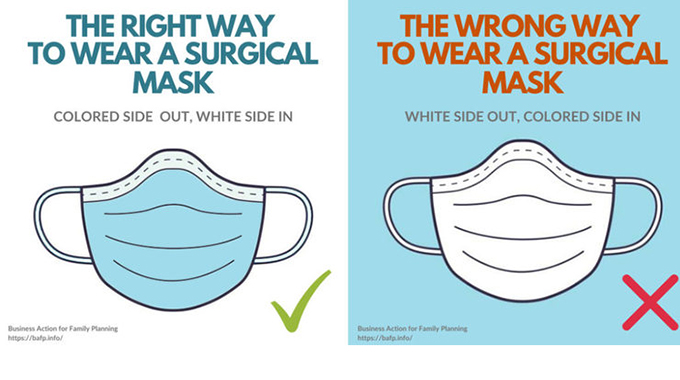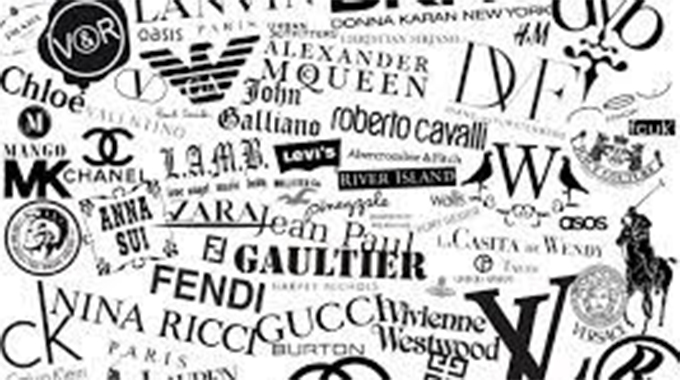Fashionable masks, hygiene during Covid-19 period

Tafadzwa Zimoyo Fashion 263
It’s the end of the week and marking the end of the month too.
March will soon be gone, hope you have achieved whatever you were planning on doing in that month.
Sad news that our country has been hit by Covid-19 and so far we have lost a life.
As they are always telling us — please stay at home.
For those still at work and have other business in town, always move with a sanitiser in your pocket or handbag.
Do not greet each other and observe social distance.
So there is a debate among the populace over the use of surgical-face masks with some going to an extent of designing their own using different materials.
Some fashion designers too are making money as they are selling them.
How far can we go with these face masks?
I am not sure of Queen Elizabeth’s pictures which are circulating as she is donning face masks which match her outfits.
On a sad note Prince Charles tested positive of Covid-19.
We wish him well.
Back to issue of masks, writer Vanessa Friedman said the surgical face mask has become a symbol of our times.
Well, if there is a symbol of the current confusion and fear, the misinformation and anxiety, generated by the spread of the new coronavirus, it is the surgical face mask.
“When history looks back on the pandemic of 2020, those white or baby blue rectangles that hide the mouth and nose, turning everyone into a muzzled pelican, will be what we see.
“The masks were introduced after the infection was identified, first in Asia, where they were already common, and then in Europe,” she said.
I concur with her as these days they are everywhere not forgetting that there is a serious face mask shortage.
After all, she said, the contagion itself is intangible: a microscopic organism resting on hard surfaces, transmitted through the air in water droplets from infected individuals.
It can’t be seen.
However, even more than bottles of hand sanitiser and disinfectant wipes, the mask has become the virus’ avatar; shorthand for our looming dread, desire to hide, inability to protect ourselves, and desire to do something — anything — to appear to take action.
According to World Health Organisation (WHO), the masks can be worn;
If you are healthy, you only need to wear a mask if you are taking care of a person with suspected 2019-CoV infection.
Wear a mask if you are coughing or sneezing.
Masks are effective only when used in combination with frequent hand-cleaning with alcohol-based hand rub or soap and water.
If you wear a mask, then you must know how to use it and dispose of it properly.
When and how to wear medical masks to protect against coronavirus
Before putting on a mask, clean hands with alcohol-based hand rub or soap and water.
Cover mouth and nose with mask and make sure there are no gaps between your face and the mask.
Avoid touching the mask while using it; if you do, clean your hands with alcohol-based hand rub or soap and water.
Replace the mask with a new one as soon as it is damp and do not re-use single-use masks.
To remove the mask: remove it from behind (do not touch the front of mask); discard immediately in a closed bin; clean hands with alcohol-based hand rub or soap and water.
I rest my case on that one. . .
Checking in our closet this week, we are still on the subject of cleanliness hence here is why it is so important to clean your jewellery during the pandemic – and how to do it properly.

Professional jewellery cleaning with toothpaste and cleaning rug
United Kingdom beauty enthusiast Gloria Edokpolo and writer in “Glamour” magazine emphasised on hygiene and cleanliness is at an all-time high.
“With the number of people contracting coronavirus heightening, in addition to the elderly and anyone with underlying health conditions at further risk, the government has imposed strict instructions for everybody (with the exception of key workers) to remain at home and only leave the house for necessities,” she said.
As social distancing and self-isolation are the key weapons we can collectively utilise to tackle Covid-19, this does diminish the importance of the simpler preventative causes such as washing and sanitising our hands frequently, particularly our rings.
“As coronavirus can remain active on surfaces and objects for days at a time, sanitising everything we possibly can should become second nature at this point in time.
“When washing our hands for a minimum of 30 seconds, naturally we may remove any jewellery and set it aside, and then put it back after.
“However, this is not the most efficient way to go about the situation as jewellery can easily carry the virus.
“The easiest option would be to just stop wearing jewellery altogether to avoid hassle until we have seen the pandemic through, but for people who would rather not remove wedding rings or sentimental pieces, there are steps you can take to ensure your jewellery is not contaminated,” she said.
She writes that the first step is to simply wash your rings separately with an antibacterial ointment, for the same amount of time you would wash your hands.
“For sapphire, ruby, aquamarine, garnet and diamond jewellery, washing your hands often with soap is great, but can cause a layer of soap and dirt to build up behind a gemstone.
“If your gemstone is looking a bit dull, soak it in some lukewarm, soapy water to soften the layer of dirt, then use a soft toothbrush and some tepid soapy water to gently scrub either side and behind to bring the gemstone back to its sparkling best.
“For emerald jewellery, gently scrub it with a soft toothbrush and only water (no soap), and it should do the trick”.
“If you have been rather active during the day and your hands have frequently come into contact with many surfaces or objects that may not have been wiped down and disinfected prior, you can also soak your rings in a rubbing alcohol solution,” she explained.
Anti-bacterial wipes are an alternative you can use to wipe your rings, or spray some disinfectant on.
The bottom line is, we must clean, sanitise, wash and disinfect our way through out this pandemic.
So after chatting with my colleagues at work I came to the observation that after religiously sanitising our hands, coughing on the elbow – we are forgetting one thing.
Clothes!!!
I mean the clothes that we will be wearing during the day, how then do we take care of them? Must we get rid of them?
My friend Charles laughed out loud saying that I am going too far on these precaution measures.
So after a day’s work do we put our clothes straight in our laundry basket or we get rid of them?
Well life span of the virus on fabric is not yet known, many medical experts believe that the virus is likely to survive for a short period of time on soft surfaces.
Here are a few simple steps you can take to avoid the spread of coronavirus from potential traces on your clothing, thanks to fashion editor Charlie Teather.
- Place a washable (or disposable) bin liner into the laundry basket rather than simply tossing dirty clothes in.
- If you fail or forget to line your laundry basket, make sure to clean and disinfect the hamper thoroughly.
- Avoid shaking your dirty laundry in order to minimise the possibility of the virus dispersing through the air.
- Wash clothes using the warmest appropriate water setting as per the items’ labels.
- Wear disposable gloves if or when handling dirty laundry from a person suspected or confirmed to have coronavirus. Clean hands immediately after removing the gloves.
- Wash high-risk items separately from other items.
Prevention is better than cure and you will thank me later.









Comments